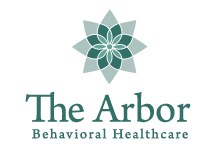Most people have never heard of co-occurring disorders. Simply put, this describes an individual that suffers from two or more disorders at the same time. A good example of this would be a person who suffers from both drug addiction and schizophrenia. Co-occurring disorder is a relatively new terminology and was formally identified as dual disorders, which fails to describe the true scope of the issue as an individual can suffer from 3 or even 4 disorders simultaneously. While this is a relatively unknown disorder, it is quite common and often overlooked as care providers tackle the larger issue or, assumes that one disorder is a byproduct of the other. It is estimated that over half of all mentally ill adults suffer from some form of substance abuse, which only compounds the problem. Some common examples of co-occurring disorders would be schizophrenia with cocaine addiction, major depressive disorder with alcoholism, and abusing painkillers with panic attacks. A number of acronyms have also developed to describe some of the more often seen co-occurring disorders such as MICD (mentally ill chemical dependant), CAMI (chemically abusing mentally ill), SAMI (substance abusing and mental illness), and MISA (mentally ill substance abuser). Individuals with extreme mental disorders may also experience a greatly reduced threshold of tolerance to drug and alcohol, which can then lead to the subsequent addiction. While many people will be at a higher risk to develop co-occurring disorders due to genetic risk, many more are products of environment. These individuals often attempt to self medicate their own mental disorder with drugs and alcohol which then leads to the dual diagnosis disorder. This often leads to greater mental issues and often leads to other psychiatric or substance disorders. Treatment is possible but only after a successful diagnosis of the actual co-occurring problems. The treatment must treat both the mental and substance abuse simultaneously. Failure to do this can result in utter failure of the prescribed treatment as the individual seeks solace from the substance dependency during psychiatric sessions or, falling deeper into their mental disorder as they physically cope with detoxifying. One of the biggest hurdles for care providers is overcoming denial in the individuals with the co-occurring disorder. Usually, the first step in treatment for the afflicted is admitting the problem exists. With a patient having 2 or more disorders, this can be a daunting task. The Mental Health System at large has a wide variety of treatment programs available for suffering individuals starting with rigorous background checks to fully flush out the all issues and in some cases, the cause. During these screening sessions, it is imperative that as much information and history of the individual be uncovered for proper identification and subsequent reversal of the disorders. These treatments include psychiatric and physical health consultation, medication and medication monitoring, “Double Trouble” group sessions, psycho educational information, dual recovery self help groups, and in some cases, outpatient treatment programs. Tailoring treatments that deal with the multiple disorders and vigilant follow through on the caregivers behalf are essential for recovery.
Understanding and Treating Co-Occurring Disorders

